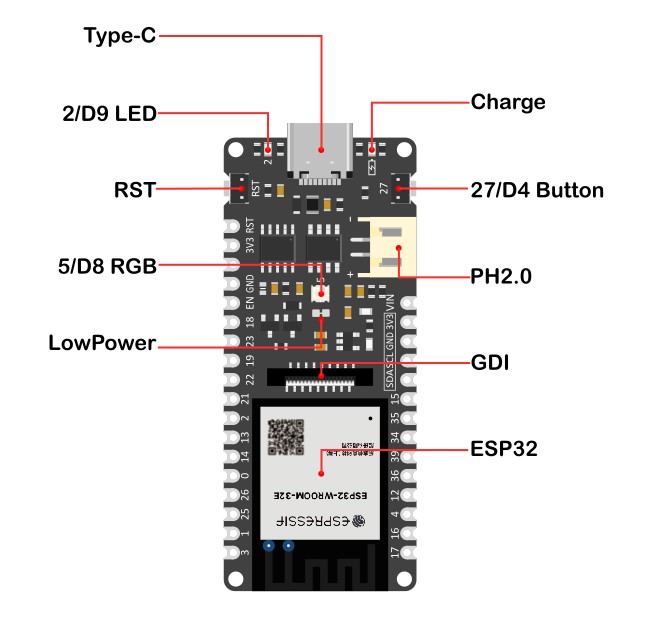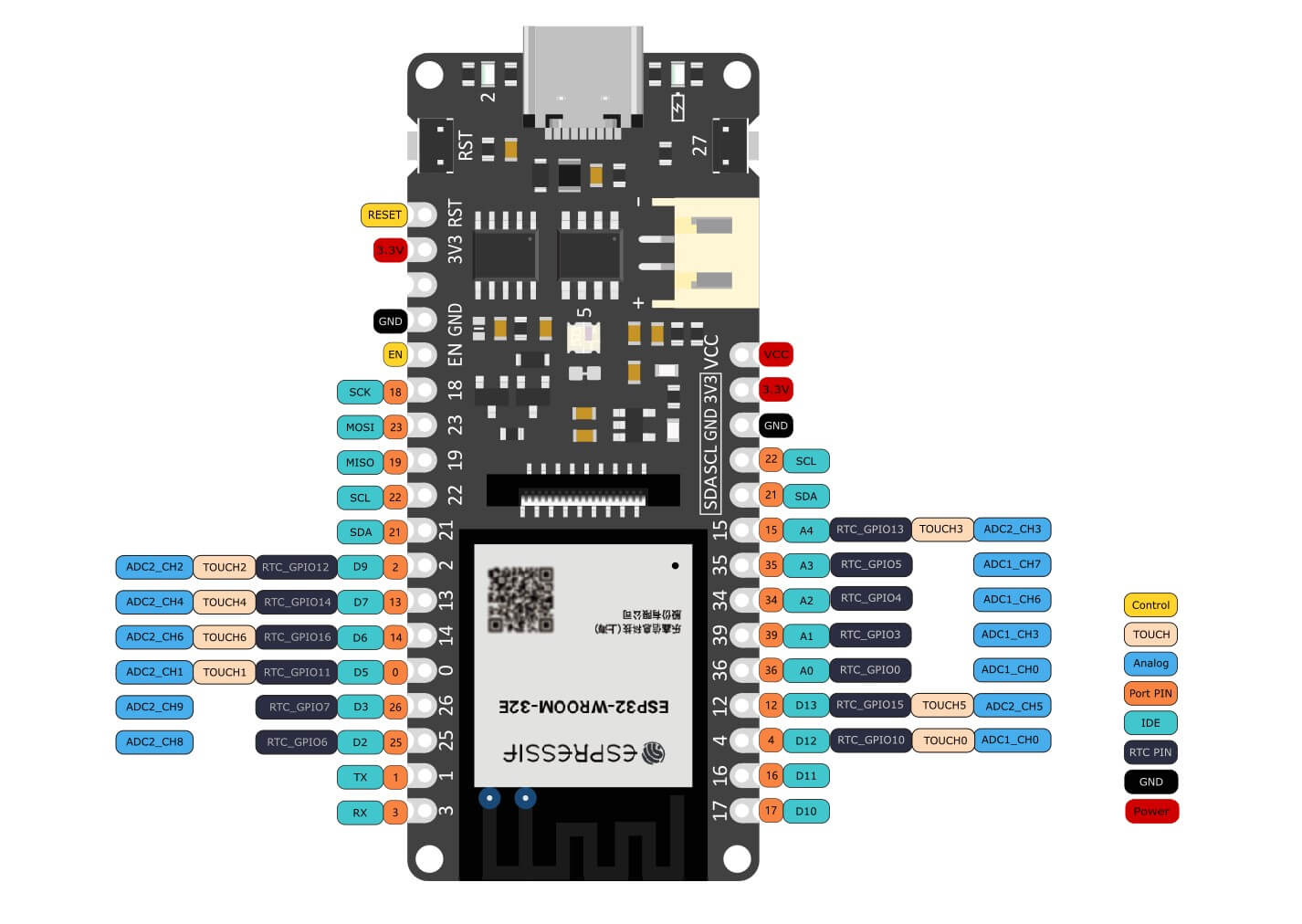
FireBeetle 2 ESP32-E IoT Microcontroller with Header (Supports Wi-Fi & Bluetooth)
All prices are VAT included
FireBeetle 2 ESP32-E, specially designed for IoT , is an ESP-WROOM-32E-based main controller board with dual-core chips.
DFR0654-F supports WiFi and Bluetooth dual-mode communication and features a small size, ultra-low power consumption, onboard charging circuit, and easy-to-use interface, which can be conveniently used for smart home IoT, industrial IoT applications, wearable devices, and so on. You can easily create your own IoT smart home system when connecting it with an IoT platform like IFTTT.
FireBeetle 2 ESP32-E supports Arduino programming and will support Scratch graphical programming and MicroPython programming very soon. We provide you with detailed online tutorials and application cases, and there are thousands of sensors with welding-free Gravity interfaces and actuators to help you get started easily. Besides, the stamp hole design makes it able to be easily embedded in your PCB , greatly saving your costs and time to build and test a prototype.
We sell two versions of Firebeetle 2 ESP32-E, unsoldered version and with header version. If you want to plug the Firebeetle shield into your Firebeetle mainboard, the Firebeetle 2 Board ESP32-E(Pre-soldered) is better for you.
Note: FireBeetle 2 and FireBeetle pins and sizes are not compatible, and neither are the expansion boards.

Figure 1. Board Overview

Figure 2.Pinout
What's the difference between FireBeetle ESP32 and FireBeetle 2 ESP32-E
Espressif has recently released one wafer-level change on ESP32 Series of products (ECO V3). Below are the main design changes in ECO V3 Series of chips:
1. PSRAM Cache Bug Fix: Fixed “When the CPU accesses the external SRAM in a certain sequence, read & write errors can occur”.
2. Fixed “When each CPU reads certain different address spaces simultaneously, a read error can occur.”
3. Optimized 32.768 KHz crystal oscillator stability, the issue was reported by the client that there is a low probability that under ECO V1 hardware, the 32.768 KHz crystal oscillator couldn't start properly.
4. Fixed Fault injection issues regarding secure boot and flash encryption are fixed.
5. Improvement: Changed the minimum baud rate supported by the CAN module from 25 kHz to 12.5 kHz.





